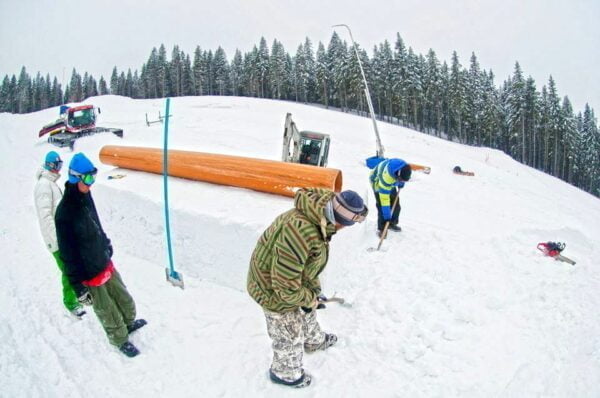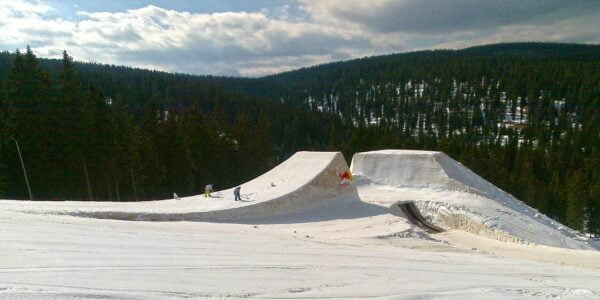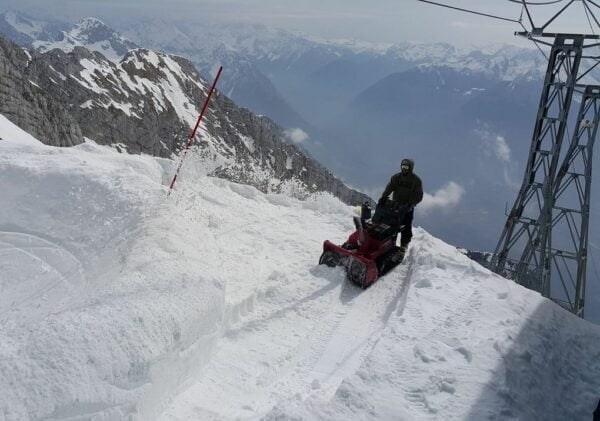
Reducing the amount of snow needed to develop a snow park
The temperatures are increasing and in the long term affecting the length of the winter season and especially snow conditions on ski resorts with lower altitudes. Artificial snow has solved many problems when there is a lack of natural snow, however to make artificial snow, temperatures below freezing are needed.
Consequently, resorts must predict the timing when the temperatures will be in the right range to produce artificial snow; otherwise a lot of time can pass until the temperatures reach the desired range again.
Resorts with terrain parks still cover slopes with the snow first and postpone the covering of the terrain park, as terrain parks require huge amounts of snow. That is why it is not unusual that terrain parks are not in the full operating capacity even until the end of January.
To compensate for the amount of snow needed to develop terrain parks, most of the platforms for park obstacles can be made out of dirt. That comes in handy especially when considering bigger jump features and halfpipes. In this way the amount of needed snow can be reduced to as much as 10.000 m3 per obstacle.
Dirt platforms must be made based on precise and thoughtful planning, so that there is enough space left to enable further changes in the development to prevent the park from becoming boring in the long term. Such planning should also include the positioning of snow guns and giraffes to avoid excessive moving of snow which also consequently reduces the costs.
The main reason why resorts do not implement dirt platforms is that they require quite a large initial investment to cover the cost of their construction. Construction costs can be reduced by obtaining the material for platforms on the slope where the park is positioned by adjusting the terrain. For bigger obstacles the solution is to deepen the whole slope area by for example 0,5 m. This process produces a lot of material and at the same time makes the slope straighter and therefore easier to prepare and maintain during the winter. Such process also does not drastically change the characteristics of the slope and reduces the need to for the material to be brought in by trucks from remote locations.
The material for the platforms does not have to be limited only to dirt, as base layers can also be made out of rocks or similar materials which are cheaper, cover a larger volume and enable the water to run through the platform thus preventing erosion. It is enough to cover the platforms only with dirt and seed it with grass to increase stability and reduce the erosion.
Similar techniques can also be used in terrain parks situated on the glaciers; however the dirt there is replaced by snow. During the off season the snow can be collected and stored in big piles. After some time (usually few seasons) the snow will change to ice which will save the amount of snow needed to build the terrain park. However, it has to be considered that the glaciers are moving downwards, which subsequently means that after approximately 5 years the lines in the park will need to be corrected by an excavator.
Even though the development of dirt or ice platforms for terrain parks requires a rather big initial investment it largely contributes to the reduction of the costs in the long term.


